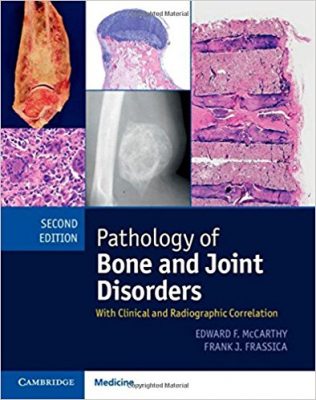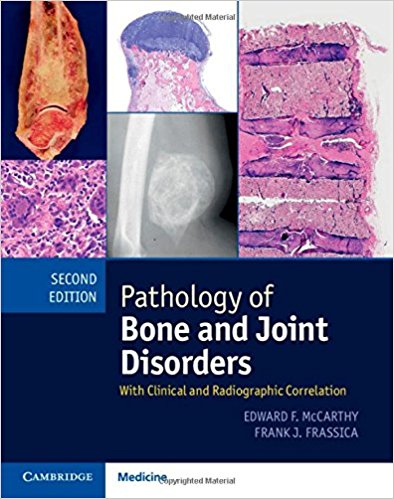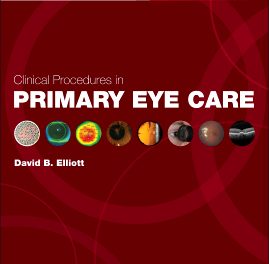 Authors: Edward F. McCarthy, MD; and Frank J. Frassica, MD
Authors: Edward F. McCarthy, MD; and Frank J. Frassica, MD
Publisher: Cambridge University Press – 374 pages
Book Review by: Nano Khilnani
This book is a broad introduction to orthopedic pathology. Co-written by bone pathologist Dr. Edward McCarthy and orthopedic surgeon Dr. Frank Frassica, this text has been developed primarily for residents in pathology and orthopedic surgery. The information presented and discussed in this book is the minimum that such residents should know at the completion of their training, they contend. .
This volume also provides practicing physicians with a ‘useful survey of bone and joint disease,’ the authors write in their Preface. While the discussions on the various topics in this book are kept at an introductory level, numbered references for further study and exploration are provided for those who so desire at the end of each chapter. Consisting of 17 chapters, we provide their titles below, which serves as a sort of overview of the contents for the users of this book:
- Diagnosing bone disease
- Anatomy and physiology of bone
- Genetic diseases of bones and joints
- Metabolic bone disease
- The pathophysiology of fractures
- Skeletal manifestations of systemic disease
- Osteonecrosis
- Infections of bones and joints
- Paget’s disease
- Metastastic carcinoma in bone
- Plasma cell dyscrasia
- Primary bone tumors
- Bone cysts
- Tumor-like lesions
- Diseases of synovial membrane
- The pathology of failed total joint arthroplasty
- Management of orthopedic pathology specimens from the operating room to the microscope
Fully-searchable online access to text and images in this book is available. Steps:
- Visit http://ebooks.cambridge.org , then click ‘Register’ followed by ‘User Login’
- Scratch off Activation Code found on the inside front cover of your book
- Login using your Cambridge Books Online account
- Click on ‘My Bookshelf’
- Enter Activation Code into the box provided and click ‘Activate Now’
- Click on the book title to view the book’s content
Drs. McCarthy and Frassica not only work together, they also teach together at the same institution, drawing from what they have learned in the course of their daily practice. In the analysis and treatment of bone diseases, it is important that pathologists and orthopedists share their expertise. They state that it is also important to have radiologists involved:
“We believe this a multi-disciplinary approach should inform students’ learning from the beginning. That is, when pathologists begin to learn about bone disease, they should at the same time, learn to read radiographs. The radiographs represent the gross pathology of bone and joint disease, and they provide the context for interpreting histologic features. Conversely, orthopedists and radiologists must learn to look at pathology slides. Seeing tissues under the microscope will help them better understand what a disease is doing to the patient.”
A good way to understand how the content – text and images (micrographs, radiographs, etc.) – is presented throughout this book is look at the outline of chapter 1 – Diagnosing Bone Disease:
The Spectrum of Bone Disease
- Congentital Diseases:
- Skeletal displasias
- Gene mutations indirectly affecting the skeleton
- Metablic Bone Disease
- Osteopenia associated with endocrine disorders
- Osteopenia associated with aging
- Disuse osteoporosis
- Traumatic Bone Disease
- Circulatory Diseases
- Bone Infection
- Neoplastic Bone Disease
- Bone Changes in Systemic Disease
The Multidisciplinary Approach to Diagnosis
- The Clinical Presentation
- Age and location
- Pain
- Swelling and deformity
- Other diseases and systemic signs
- Laboratory Studies
- Indices of bone turnover
- Radiologic-Histologic Correlation
- Patterns of radiodensity
- Patterns of radiolysis
- Ancillary Radiographic Techniques
- The radionuclide bone scan
- Computed tomography
- Magnetic resonance imaging
- Positron emitted tomography
- Dual energy x-ray absorptiometry
- Ancillary Histologic Techniques
- Immunohistochemistry
- Molecular pathology
- Histomorphometry of undecalcified bone
References
This is a richly illustrated volume on bone and joint diseases, with short introductions, and concise discussions of clinical, pathologic and radiographic features, and treatment suggestions. A multidisciplinary tripartite approach (involving orthopedics, pathology, and radiology) is suggested as the ideal way to learn about, diagnose and treat bone disease by the two authors of this comprehensive, well-written book.
Authors:
Edward F. McCarthy, MD is Professor of Pathology and Orthopedic Surgery at The Johns Hopkins School of Medicine in Baltimore, Maryland.
Frank J. Frassica, MD is Professor of Orthopedic Surgery and Oncology at The Johns Hopkins School of Medicine in Baltimore, Maryland.







